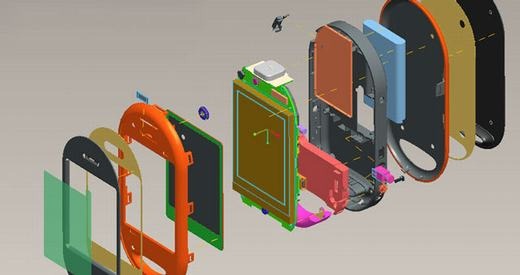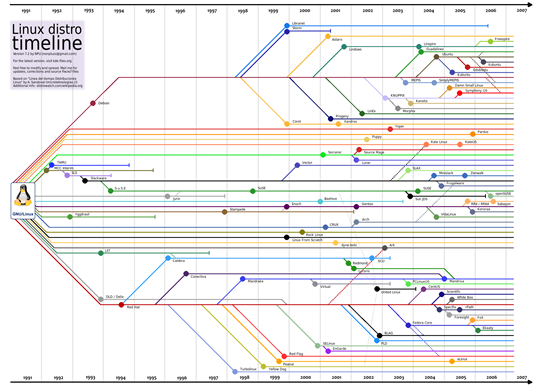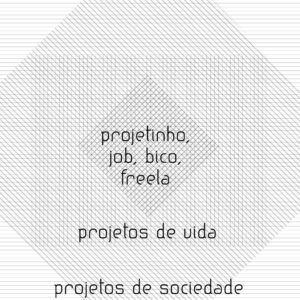Design is a messy word with many different meanings. When people wants to stay focused on a practical matter, they add a noun to it: Graphic Design, Furniture Design. When they want to qualify Design, for instance, they use an adjective: Industrial Design, Good Design.
It´s a simple statement that an adjective can change the meaning of a noun, but after some frequent use of the same combination the change becomes almost invisible; it makes itself an inseparable part of the noun.
What would be of Design without the Industrial adjective? Perhaps a fuzzy science, but that´s not my point. What are the means we take for granted from the Industrial word? What are the pragmatic effects of using such a qualifier? And not using it? Perhaps less disposable goods.
But I don´t want to discuss the Industrial adjective on this post. I want to discuss the Open and Free adjectives that is starting to be combined with Design to mean a new approach for making things.
Open Design
Massimo Menichinelli announces that Open Design is going mainstream now. It´s used mainly to qualify product design projects that share its source files, like vector and CAD drawings under an open license. These are supposed to be used by anyone who is interested in developing further the product or simply to build it up. It´s pretty much like Open Source Software: you can check the code, change it and compile your own version.

One of the first projects that did integrated Open Source Software and Open Design was OpenMoko, a free mobile phone. I was following the project development since the beginning, but I was not able to collaborate when it was only about software code. I don´t code.
When they announced the publishing of CAD drawings, I became excited because the project came to an area where I could possibly help. Soon after I checked the released files, I realized that the Design was done already. There would be no point to collaborate on that phase. Worst than that, there were no documentation available about how and why they achieved that design. I couldn’t even evaluate the design project because I didn’t know project constraints and user requirements.
Ok, that is not the purpose of Open Design. The main concern is about opening the design results, not the design process. Good things are happening through it, like the spread of fab labs, OpenIDEO, Design for Download and others. But what could be achieved by opening the design process? Then we come to Free Design.
Open Source and Free Software
I would like first to go back to an old discussion that took place on the software community and that possibly many Open Design enthusiastic are not aware of. The Free Software concept arose from the hacker culture at the eighties and one of its most important advocate is Richard Stallman. Stallman defined Free Software as one that guaranteed four types of freedom:
- The freedom to run the program, for any purpose
- The freedom to study how the program works, and change it to make it do what you wish
- The freedom to redistribute copies so you can help your neighbor
- The freedom to distribute copies of your modified versions to others
To protect this freedoms, Stallman created the GNU license, which was used by many software projects like Linux and its many distributions, for instance.

At the late nineties, people struggling to fit Free Software in business environments started to call it Open Source, because the Free adjective appealed to businessmen as unviable. Since the beginning, Stallman stressed that Free should be taken as in “free speech” not as in “free beer”, so Free Software projects could be sold as well, but that explanation was not enough. Although Open Source is an essential concept for Free Software, it lacks the activist ideal that engaged many people. Stallman wrote about it:
The main initial motivation of those who split off the open source camp from the free software movement was that the ethical ideas of “free software” made some people uneasy. That’s true: raising ethical issues such as freedom, talking about responsibilities as well as convenience, is asking people to think about things they might prefer to ignore, such as whether their conduct is ethical.
Free Design
In Brazil the Free Software movement didn’t have the same problem. Free Software was translated as Software Livre because the word livre has very different meaning from grátis (zero price). That’s why we used Design Livre at Faber-Ludens when we started discussing this topic. When we brought this discussion into English, we prefer to use Free Design rather than Open Design because we consider those ethical issues a central theme.
Free Design is about letting everybody design. If we take design in a broad sense, we can say that everybody is already designing, but how conscious are them of this type of freedom? And what else could they design if we make bridges across what they know to design and what they don’t know like, for instance, a collaborative tool? A DIY manual? A Knowledge Base? A metadesign course?

Free Design not only about releasing source files. Its about releasing design knowledge. Opening the design process is the first step for that. Even if people can’t participate in a design process, they can check the design documentation and understand how it was conceived, perhaps learning something useful for another project of their own.
Imagine a society where everybody is designing and redesigning their material culture surroundings irrespective from professional expert assistance nor industrial facilities. Immediately you will be thinking about many issues that are, in its essence, ethical ones. What are the limits of design freedom? Are there safer alternatives for DIY surgery?
Because freedom is not something we can take for granted, better let people get into the discussion. That’s what we mean by Free Design. Do you wanna join us? Please comment.


Interesting, when thinking about open-design I viewed it in opening the result, and (if possible) also the process (I can’t find a better example than the reprap).
But it’s an important point to keep in mind, if we want to empower everyone :)
The Open Design community is focused right now on opening the manufacturing process. RepRap is one of the best examples of materializing the GNU licence or CC ShareAlike. Having the capability of reproducing itself, it guarantees to remain open.
But Design is way more than manufacturing process. We must think about how to open it in all of it’s steps. How to open product conception? product specification? product use?
One step ahead for the Open Design community would be to deliver more documentation about the conceptualization phase of the product together with CAD files or so.
Hi Fred,
I do agree with you that, right now, most of the Open Design (and Open Hardware) efforts are only about opening the design results and not the design processes. Unfortunately, I’d say, because they’re missing the benefits of collective intelligence in terms of problem solving.
Since 2005, all my efforts with Open P2P Design / openp2pdesign.org have been dedicated to study how to co-design open processes and systems, not just open projects. So this is a common issue for me as well. Personally, I added the “P2P” just to suggest that it was about designing social processes and systems and not just products (but in any case Open P2P Design for me it is specific and linked to a design methodology, it’s not about a whole phenomenon).
But I don’t think it makes sense to have a Free Design against an Open Design now. It’s not a question of names, and adding a new name would just add confusion and maybe more conflict.
And, frankly, it’s boring to have the same conflict about terms (Free vs. Open) in Design as well: when I talk about Open Source, it’s because this definition clearly won the match with Free Software and people know and understand it better. It is easier to explain what FLOSS software is with the concept of Open Source, it’s not that I don’t like the ethics behind it. After people understand what it’s all about, then we can talk about the ethics; and while ethics for me are very important, I want to avoid any idealism in discussing with people.
Furthermore, the ethics of Design should be more than just sharing information. An open source weapon is more ethical if it’s called free design or just for the fact that the information is freely available? An unsustainable free design product is more ethical because it’s not called open source? I don’t think so; if you want to address the ethics of Open Design, then there should be more reflection on it before just adopting the Free term: software and design are different things.
And beware: Free Software only refers to the freedom of the users, not that the process is more participative. Therefore it’s not correct to use Free Design in that therms.
And Free Software and Open Source have an historical path, why should we reverse it now for Design? Bringing open source dynamics inside design should be more than just completely copying it, so it doesn’t make sense to copy this conflict as well. ;-)
I fear that this may just be a way for splitting the Open Design community into bad and good sides before it even reaches a stable state, trying to set the Free Design trend. I guess that then we should have also Free Hardware vs. Open Hardware, Free Data vs. Open Data, Free Biotechnology vs. Open Biotechnology, Free Government vs. Open Government and so on.
I prefer to focus more on how to develop such open processes and systems at the moment.
My approach has always been not of a binary exclusion open/closed but a gradient of inclusion with modular possibilities (like the Creative Commons one).
But it’s good to start a discussion about the ethics of Open Design, let’s keep talking about it! :)
Thank you for your challenging arguments, Massimo!
On this post I was discussing the difference between the two terms, Free Design and Open Design, but I don’t see them separated in practice. Free Design does include Open Design. Openeness is a precondition for the type of freedom we’re targeting. Therefore, It’s not our intention to split communities. We’re just trying to show that there other things to think about in Open Design.
Currently, I’m trying to extend the notion of Free Design beyond the professional design circle. The freedom we’re targeting is precisely user freedom. It doesn’t matter if the design process is officially open or not, user’s will continue it after it’s done. People will adapt products to their needs and sometimes even change them in ways that current licenses don’t allow them to do. I believe that every use is also design. In that sense, Free Design is not something that we’re trying to push into society. It’s something that is already happening!
But if everybody is doing Free Design, why we need such a name? First for discussing it, second for potentializing it. We need to do both at the same time if we want to be relevant for society.
I agree that the Free name is not so good in English, but I cannot agree that Open Source has won over Free Software and the debate is over. If you compare search terms in Google Trends you will see that Free Software has more than double search volume than Open Source. Also, the recent move from one of the biggest Free Software community projects (OpenOffice.org to LibreOffice) shows that the debate is not over. Perhaps, we should use the Libre or stay with the portuguese Livre, as this community choosed to do.